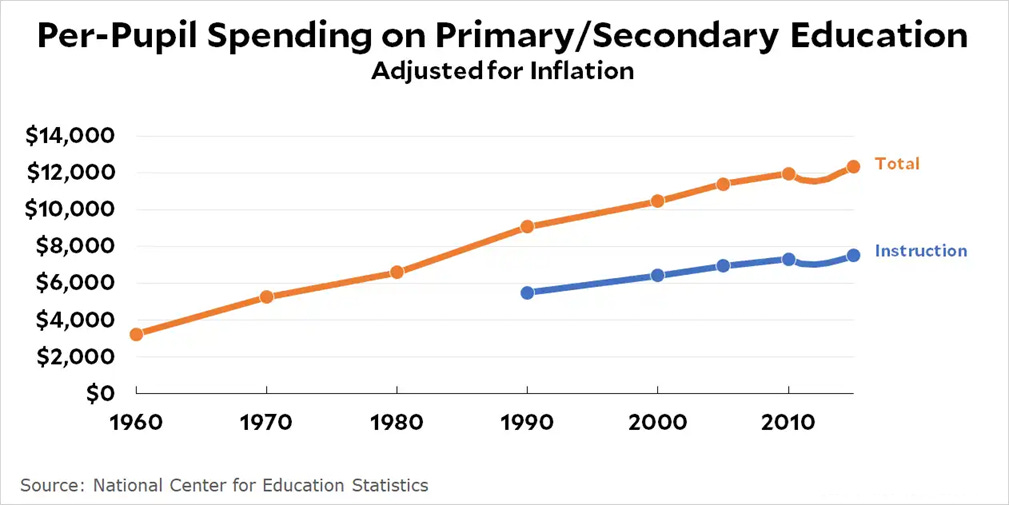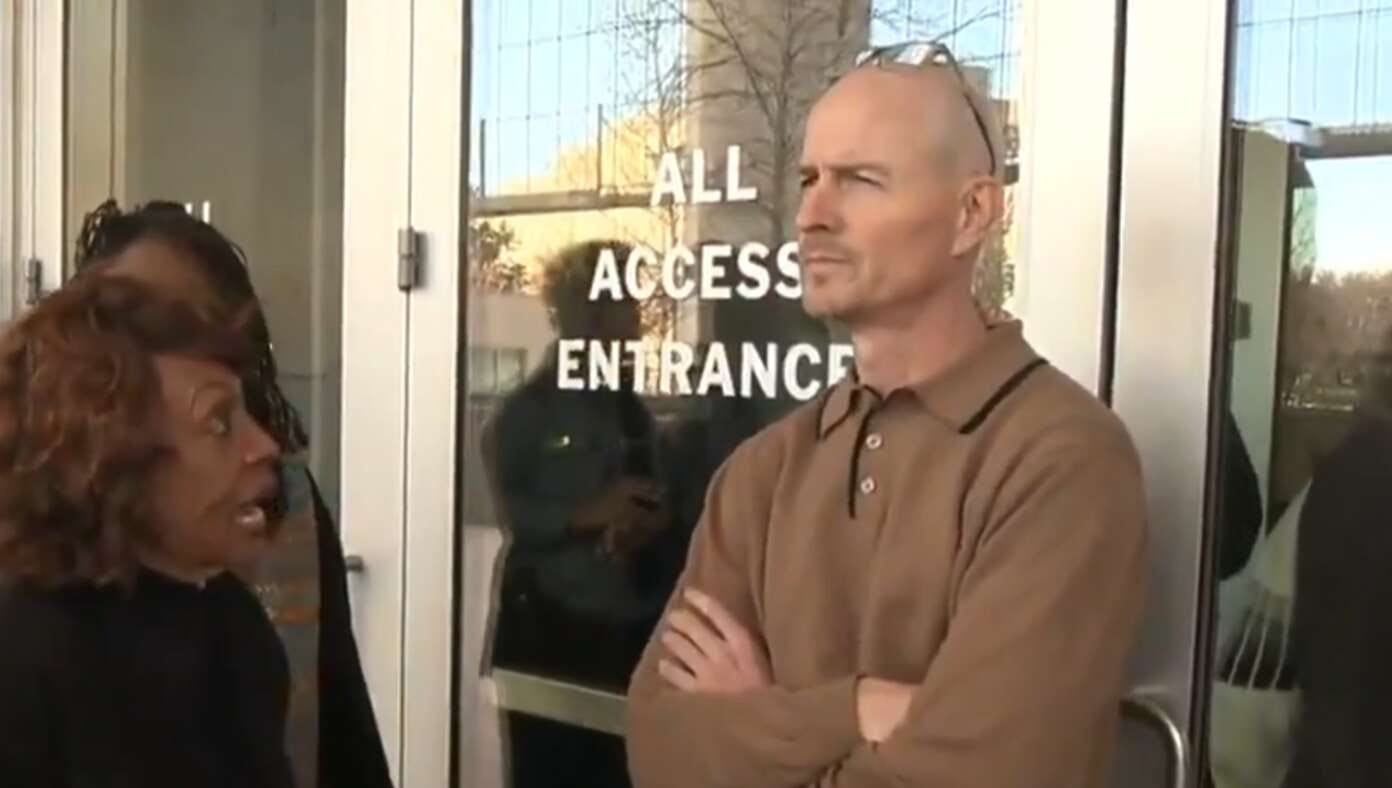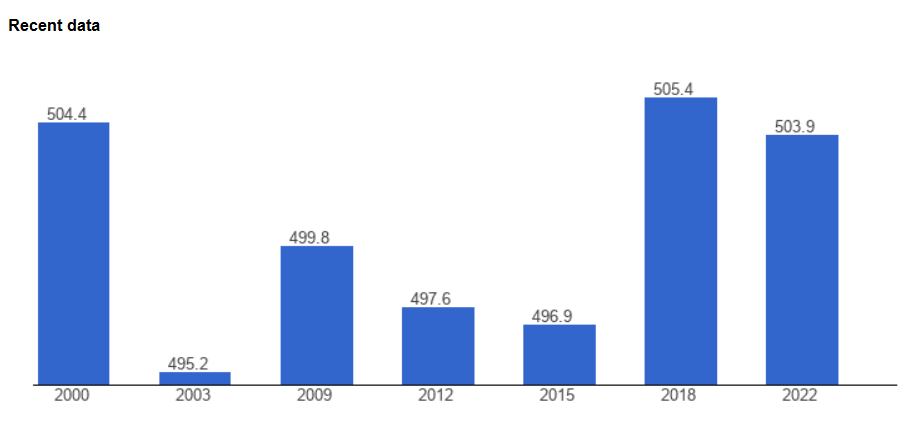Two Things True: Public Education Is Incredibly Valuable, and The US Department of Education Is Not
We are back! I wanted to take a break from “controversy” after the election and for the holiday season.
Two Things Can Be True, at least from my perspective:
- Assuring excellent public education is one of the most important things our government can do for its citizens
- We do not need 95% of the U. S. Department of Education
My mother is a retired public-school teacher and my dad was a public university professor. I spent four years on the Forsyth County Board of Education, four years as Vice-Chair of the House Education Committee, and am starting my fifth year on the State Charter School Commission of Georgia. All my kids went to public schools. My mom kept me in majority black public school in the middle of Deep South tumultuous court ordered integration in the 70s and 80s. I am all in for public education.
In fact, almost everyone says they fully support education. But… in my long career of service of our schools, I have found that the adults are not always doing the right things for that mission. It is very easy to mistake action for progress, and it is also very easy to shut down debate once someone says we are doing it “for the children”. Why? And whither the USDOE? It is certainly near the edges of the DOGE tornado.
Let’s quickly look at these two achievement charts and then I will show you the money.
The NAEP is the “gold standard” for US educational progress and PISA is the international report card that compares countries. As you can see, not much has changed in the past 25 years achievement wise in reading, which is the linchpin subject. You can look for yourself at other subjects, some sources show math and science headed down. Now behold this….

We spend more and more on education, with basically the same results, even adjusting for inflation. Notice that total spending is increasing faster than instructional (classroom) spending, and that huge gap between orange and blue is administration. Tons of research has shown little correlation between spending and results, once certain minimums are met. Thus, we are spending more and more, and much of the more is going to administration not teachers.
Now I will strongly admit that there is an argument that it has become much harder to educate kids today with the trends in culture and parenting. But the data is too overwhelming to sweep this under the rug.
That brings us to our friend, the US Department of Education. It was only created in 1979 – before that education was 100% the province of the states. As with most government programs, the purpose was noble. Let’s apply some Federal muscle to help!
What does the US DOE do? It has two big functions. It administers streams of federal money to the states to give to schools. But it also implements a maze of bureaucratic red tape and approvals for our schools, primarily the result of laws like No Child Left Behind (Bush) and initiatives like Race to the Top (Obama).
The big three money streams are $18 billion for Title 1 (low-income kids), $12 B for IDEA (special ed), and $29 B for school lunches. It sounds like a lot, but it is only 8% of the total – 92% of funding for K-12 comes from state and local governments. All of this federal money comes with massive strings attached and regulatory burden. Georgia has now made almost all state funds “strings free”, and lets the locals have the flexibility to apply it how they know best. Not so with USDOE money. “Federal compliance” monitoring takes up administrators at the local level and also requires administrators in the state Dept of Ed to work with them. A charter school I am aware of was docked millions for failing to administer this paperwork properly – not for misusing the money – but for not filling out the required TPS reports.
Race To The Top mandates the standardized testing that most everyone hates, though I think those tests have a place in our system. USDOE makes innovation here difficult. Several years back I was part of a group that a advanced a creative idea to take those end of the year assessments and make them much less intrusive, but we had to seek a “waiver” from the USDOE. I almost went blind reading the dozens of legalese pages in the Federal Register from DOE about that waiver and the tests themselves.
Similarly, in the mid-2010s Georgia came up with a new way to evaluate teachers and principals. But we couldn’t do this unless the feds “approved”. Many times a state must wait over a year for these “approvals”.
And who exactly is making these approvals? Bureaucrats- who don’t live in Georgia, don’t know our state and problems, and many of which are more intellectual policy types, not battle-hardened teachers and principals who know the real world of the trenches. If data or other evidence showed value-add from USDOE, I would be fine with it. But I just don’t see it.
I think the best argument is to consider the sentence “I think teachers are overburdened with administration, paperwork, and testing and are not just allowed to teach”. 80% of the public would agree with that and 95% of teachers. But let’s list right now how many people and groups get to set policy and tell teachers what to do:
- Principal
- Superintendent
- Local School Board
- State School Board
- State Superintendent of Schools
- State Legislature
- Governor
- Accreditation Authorities
- US DOE
- US Congress
This is a giant mess and probably worthy of its own column. Many times these groups contradict each other, and the teacher is left to sort it out at the bottom where you-know-what is rolling down the hill.
What exactly is the USDOE adding in terms of value here? Do the other 9 elements not have enough to say or do? And why does USDOE have some of the worst red tape? How did all of us who received a good education starting before 1979 get it?
Having the USDOE is mistaking activity with progress. Our country very much values public education, which is why all 50 states guarantee it and have strong supporting infrastructure. In most states it is by far the largest tax expenditure. The Feds do not need to have their noses in everything.
Thus to say that if you don’t support the USDOE that you don’t support public education is a fallacy, and is intellectually lazy. I suggest we take the federal money and block grant 100% to the states, then let them administer with folks who are much closer to the ground and have much more motivation to be service driven. They in fact are already doing most of this anyway.
There is a great quote, which I can’t find even with AI, that goes to this point. I will butcher it, but it is something like “If I want everyone to have quality shoes, it doesn’t mean I have to support a government Department of Shoes.”
Please subscribe to my Substack here: https://2thingstrue.substack.com/




As an asshole Yankee liberal from Minnesota I completely agree with you on this. The DOE doesn’t really accomplish a whole lot. I watched my oldest kid deal with No Child Left Behind AND Race to the Top and they did nothing for her (other than lose a year of actual learning so that she could be trained to take a test).
Education needs to be handled much more locally, and by people that actually know how to educate (so not most of the administrators). That said, there needs to be at least a half-assed plan about how to sunset the DOE, and not just have Elon and his collection of Dogebags walk in and shut it down.